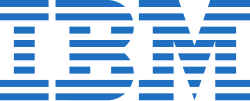Top Qs
Timeline
Chat
Perspective
IBM System/370 Model 148
From Wikipedia, the free encyclopedia
Remove ads
The IBM System/370 Model 148 (and the Model 138[1]) were both announced June 30, 1976[2]
Not only were they both more powerful and better in price/performance than the IBM System/370 Model 145 with a 3145-3 CPU and the IBM System/370 Model 135 with a 3135-3 CPU, respectively, but lower in price.[3][4]
The 148 and 138,[5] both of which were withdrawn November 1, 1983, were marketed as followups for those wishing to upgrade, respectively, their 370/145 and 370/135 systems.
Remove ads
Expanded capabilities
The 148 had four times the reloadable control storage of the 145,[6] enabling or enhancing features such as:
- APL Assist[7]
- Extended Control Program Support - going beyond the language-specific APL Assist, this had wider scope, reducing CPU cycles needed to run the operating system.[8]
The 3148 (and the 3138) had a built in service processor, aka known as an IOC, this service processor could directly attach a 3203 printer. The IOC also drives an IBM 3277 display console, whereas the older 3145 used an IBM 3215 typewriter console.
A new model of the IBM 3203 printer family, the Model 4, was announced. Rated at 1200 lines/minute (LPM), it was intended to provide already-available 1200 LPM printing, but in a more compact form.
Remove ads
Field upgrades
Sometimes known as in-the-field upgrades,[9] this is a capability that even recently was not universal.[10]
IBM could upgrade a 370/145 that had been field-upgraded to a 145-2, resulting in a 145-3. This was a major accomplishment, compared to what is known as a "forklift upgrade" out with the old, in with the new, often consuming valuable time.[11] [12]
Marketing considerations
An industry research firm said "may be described as early 380s programmed to act like 370s"[3]
See also
References
Wikiwand - on
Seamless Wikipedia browsing. On steroids.
Remove ads


